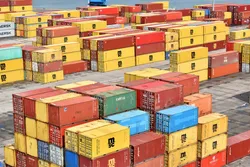How Does Sea Freight Shipping Work and What Should You Know?
2024-12-23
If you're new to international shipping or considering using sea freight for your business, it's essential to understand how the process works. Sea freight, while reliable and cost-effective, involves several steps that ensure your goods are delivered safely from one port to another. In this blog, we’ll explain how sea freight works and the key things you should know before choosing it as your shipping method.
1. The Basics of Sea Freight Shipping
Sea freight is the process of transporting goods via large cargo ships across oceans. The goods are typically loaded into containers, which are then loaded onto the ship at the port of origin. Once the ship reaches its destination port, the containers are unloaded and sent to their final destination via land transport or further shipping.
2. Containerized Shipping
Most goods shipped by sea are containerized, meaning they are packed into standardized shipping containers. These containers come in various sizes, such as 20-foot and 40-foot containers, depending on the size of the shipment. Containerized shipping offers several advantages, including easier handling, better protection against damage, and more efficient loading and unloading processes.
3. Types of Sea Freight Services
There are two main types of sea freight services: Full Container Load (FCL) and Less than Container Load (LCL).
- FCL (Full Container Load): This service is used when a shipper has enough goods to fill an entire container. FCL is more cost-effective for larger shipments and typically offers faster transit times as the container is shipped directly to the destination port without being shared with other shipments.
- LCL (Less than Container Load): If you don’t have enough goods to fill an entire container, LCL allows you to share container space with other shipments. LCL shipments are generally more affordable for smaller loads but may take longer as the cargo is consolidated with other shipments before departure and unpacked upon arrival.
4. The Role of Freight Forwarders
Freight forwarders are third-party logistics providers that assist businesses in managing their sea freight shipments. They act as intermediaries between the shipper and the shipping company, helping to arrange transportation, handle customs documentation, and track shipments. Freight forwarders ensure that the goods are shipped efficiently and in compliance with international regulations.
5. Documentation and Customs Clearance
When shipping goods internationally, proper documentation is essential to ensure smooth customs clearance. Key documents required for sea freight include the Bill of Lading (BOL), commercial invoice, packing list, and certificates of origin. Customs authorities in both the export and import countries will inspect these documents to ensure that the shipment complies with trade regulations. It's important to work with a knowledgeable freight forwarder or customs broker to navigate the complexities of international customs.
6. Shipping Routes and Ports
Sea freight involves multiple ports and routes, each with its own scheduling and requirements. Major ports like Singapore, Rotterdam, Los Angeles, and Shanghai handle the bulk of global sea freight. Understanding the specific routes your goods will take can help you anticipate transit times and potential delays. Additionally, knowing the conditions at the departure and arrival ports can help you plan accordingly.
7. Transit Times and Delivery Schedules
Unlike air freight, sea freight can take longer due to the distance and time spent navigating through various ports. Depending on the origin and destination, sea freight transit times can range from a few days to several weeks. When using sea freight, it's important to plan ahead and allow enough time for delays due to factors like weather, port congestion, or customs procedures.
8. Insurance for Sea Freight
While sea freight is generally safe, there is always a risk of damage or loss during transit. Therefore, it’s advisable to purchase insurance for your shipment. Sea freight insurance protects your goods in case of accidents, piracy, or other unforeseen circumstances during the shipping process.
Conclusion
Sea freight is a vital part of international trade, and understanding how it works can help you make informed decisions when shipping goods. From containerized shipping to the role of freight forwarders and the necessary documentation, each step in the sea freight process contributes to ensuring your goods are delivered efficiently and securely. Whether you're shipping a few items or large quantities, knowing the ins and outs of sea freight will help you navigate the logistics and take full advantage of its cost-effective benefits.



